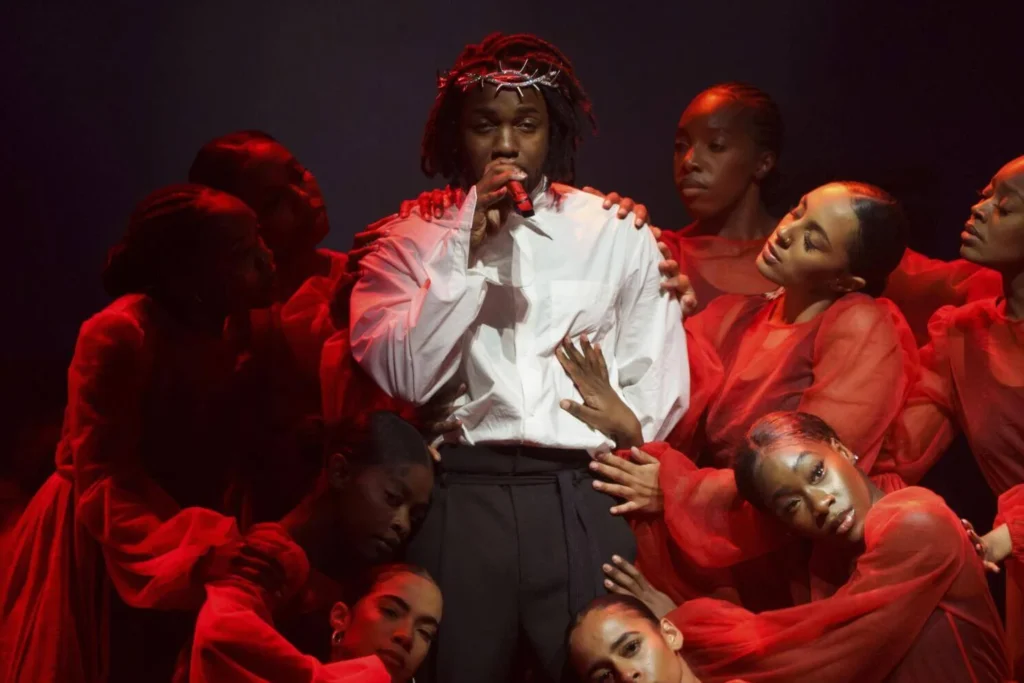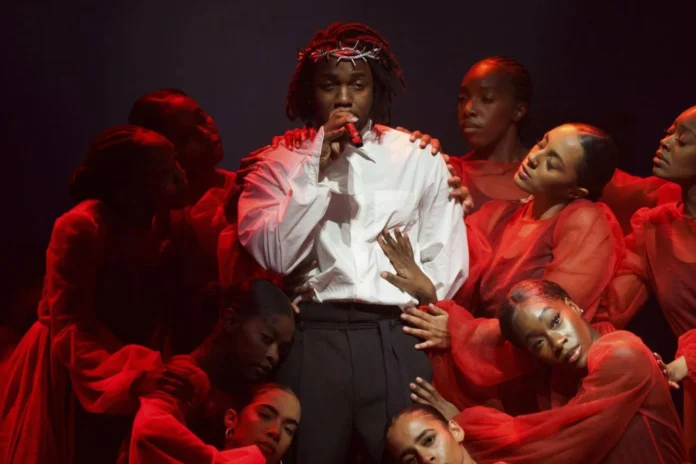Introduction
Political Stance of Kendrick Lamar has long been a subject of discussion, earning him the reputation as one of the most politically conscious rappers of his generation. From his early albums to his most recent performances, his music has often been seen as a reflection of social movements and political discourse. However, as his career has progressed, so has the complexity of his stance. Is he still the voice of activism, or has his political engagement faded? More importantly, what does his evolving perspective mean for his legacy and his influence on hip-hop culture?
The Early Years: A Reluctant Political Voice
Kendrick’s political journey began in 2012 with his debut album, but his reluctance to engage in traditional political processes was evident. In an interview with the conspiracy website Truth Is Scary, he stated, “I don’t do no voting,” sparking backlash from activists who believed disengagement only strengthened the status quo. However, he later clarified that he supported voting—but only for “the right reasons.”
His 2015 album To Pimp a Butterfly was a turning point. The album’s cover art, depicting Black men celebrating over the corpse of a white judge in front of the White House, was a bold statement. The track “Alright” became an anthem for the Black Lives Matter movement, chanted during protests against police brutality. But even then, Kendrick’s statements were layered with contradictions, at times questioning the very communities he was perceived to uplift. His lyrics reflected both the pain of oppression and the internal struggles of navigating a system that often seemed rigged against Black voices.
Rising to Prominence: Protest Symbol or Contradiction?
Kendrick’s performance at the 2016 Grammys, where he and his dancers appeared in chains and prison blues, solidified his status as a politically conscious artist. The imagery was powerful, evoking historical injustices and connecting them to the modern-day incarceration crisis. But his commentary remained nuanced. While he aligned with the struggles of Black Americans, he also emphasized personal responsibility, famously stating, “When we don’t have respect for ourselves, how do we expect them to respect us?”—a remark that drew criticism for echoing respectability politics.
His political presence continued into 2018 when he curated the Black Panther soundtrack, further aligning himself with Pan-African themes and Afrofuturism. The album was a celebration of Black excellence but also touched on themes of power and economic disparity. At the same time, his growing mainstream success saw him working alongside institutions traditionally viewed as oppressive to Black voices, raising questions about whether he was straddling the line between activism and establishment approval. Was Kendrick still speaking truth to power, or had he become a part of the very system he once critiqued?
The Shift: From Outspoken to Ambiguous
Kendrick’s involvement in protests waned in the wake of George Floyd’s murder. He attended a peace walk in Compton but remained silent, letting his presence speak for itself. His 2021 track “Family Ties” addressed this shift directly: “I been duckin’ the social gimmicks, I been duckin’ the overnight activists.” This was a clear message to those who expected him to be a permanent spokesperson for social justice.

His 2022 album Mr. Morale & the Big Steppers continued this introspective journey, featuring controversial figures like Kodak Black while tackling personal struggles rather than explicit political messaging. The album’s themes focused on generational trauma, therapy, and personal accountability rather than external activism. His Glastonbury performance, where he chanted “Godspeed for women’s rights” after the overturning of Roe v. Wade, was a rare moment of direct advocacy, yet it felt disconnected from his broader artistic direction. Fans and critics debated whether this was an intentional distancing from political messaging or an evolution of his approach.
Super Bowl and Beyond: A Final Break from Activism?
In 2024, Kendrick headlined the Super Bowl halftime show—an ironic twist given the NFL’s history of suppressing protests, particularly regarding Colin Kaepernick’s kneeling movement, which Kendrick had once defended. His acceptance of this platform suggested a departure from the activist role many had assigned him. Was this a sellout moment, or was it a strategic move to infiltrate mainstream spaces and use his artistry to provoke thought?
His recent feud with Drake even saw political themes weaponized. Drake accused him of “acting like an activist” while Kendrick fired back with “No, you not a colleague, you a f**in’ colonizer.”* Yet, neither artist connected their jabs to real-world issues, leaving fans wondering where Kendrick truly stands in today’s political landscape. The lines between art, personal conflicts, and political statements had never been more blurred.
A Larger Conversation: The Responsibility of Political Artists
Kendrick Lamar’s political evolution is layered, neither fully activist nor apolitical. His early work undeniably influenced movements like Black Lives Matter, but his more recent approach leans into ambiguity, personal reflection, and contradictions. This evolution raises broader questions: Should artists be expected to maintain a consistent political stance? Is it fair to hold them accountable as permanent activists? Or is their responsibility solely to their art?
Artists like Nina Simone and Bob Dylan have historically used their platforms to speak against injustice, but even they evolved over time. Kendrick’s shifting engagement may not be a retreat but rather an acknowledgment that activism itself is complex. Rather than leading protests, he now provokes deeper introspection about the systems we live within.
Conclusion: A Politically Complex Artist with an Unclear Future
Whether his silence is a strategic move or a genuine shift in priorities, one thing remains clear—fans will continue to dissect his lyrics and actions, searching for the political depth they have long associated with him. Kendrick Lamar’s politics are not static; they ebb and flow, reflecting both his personal journey and the ever-changing social landscape. Perhaps that is his greatest political statement: the acknowledgment that neither activism nor art exists in absolutes.


